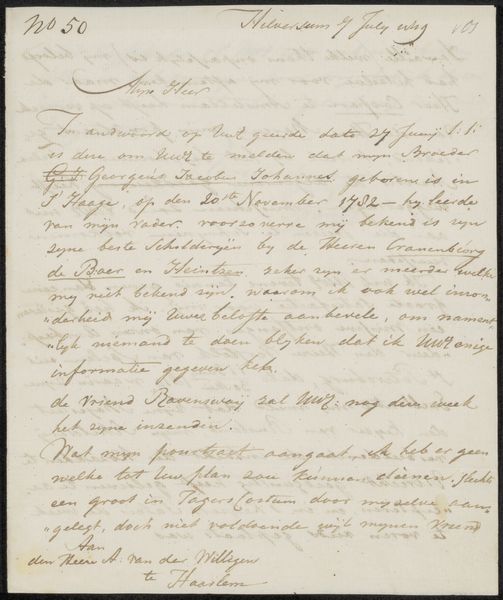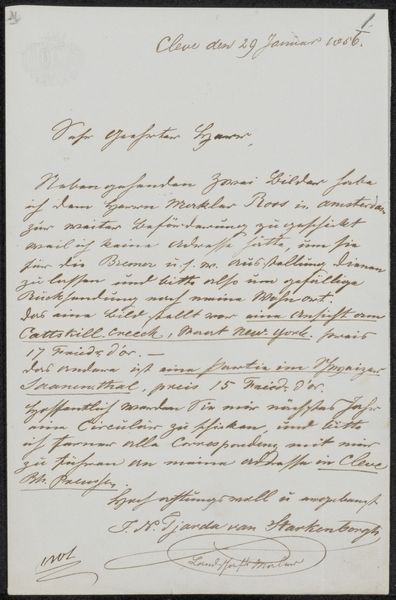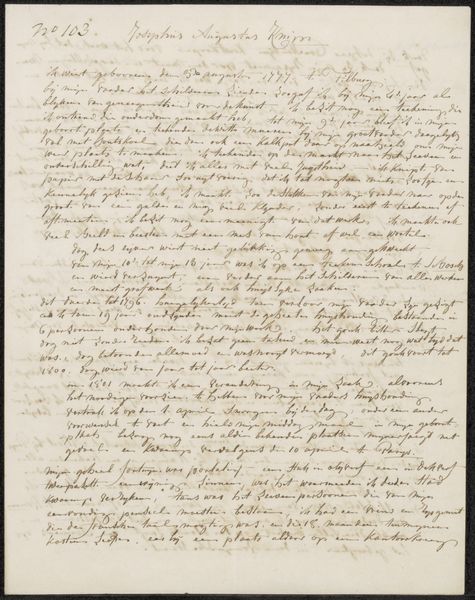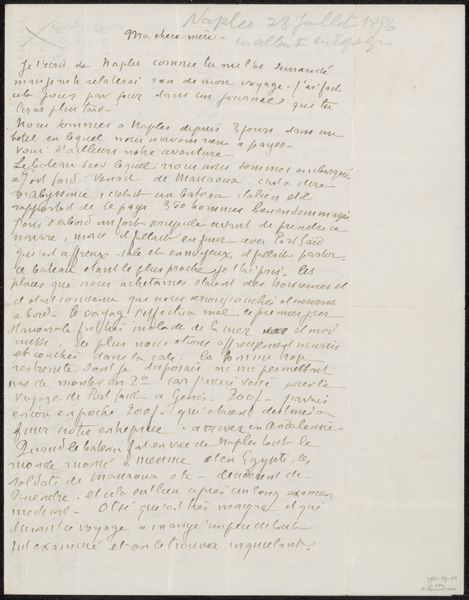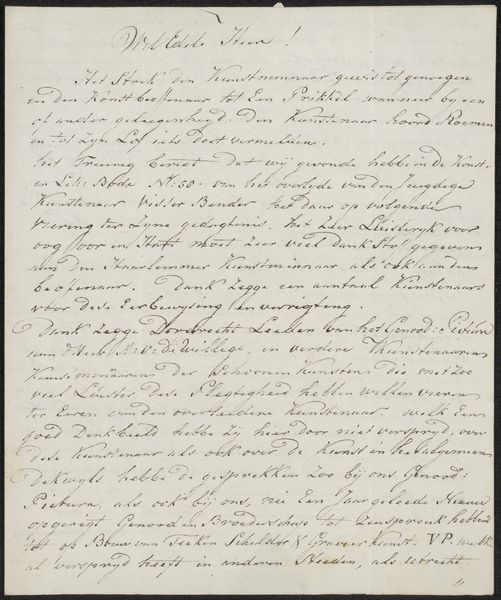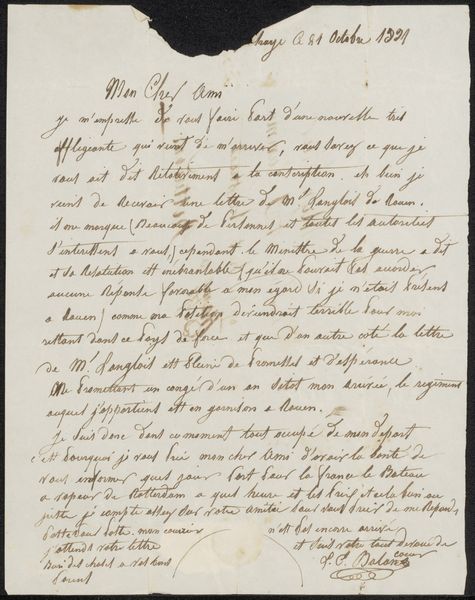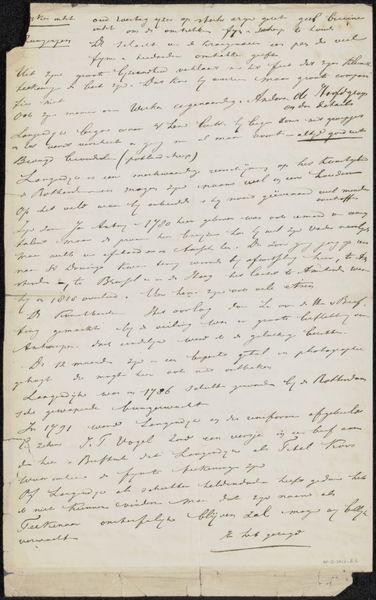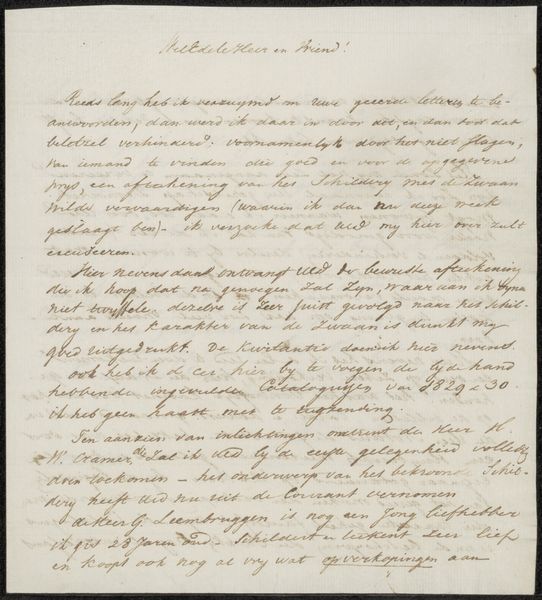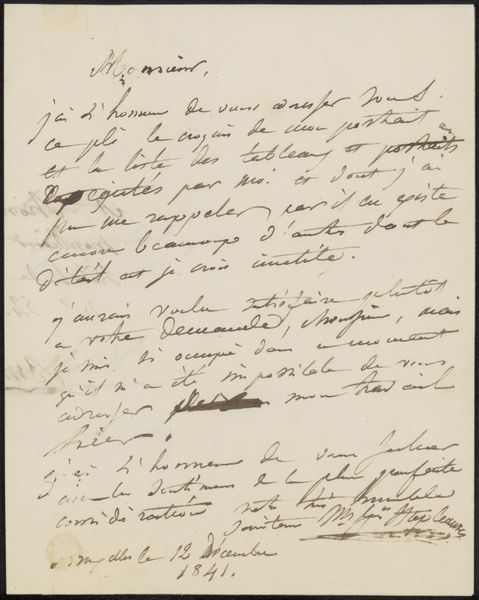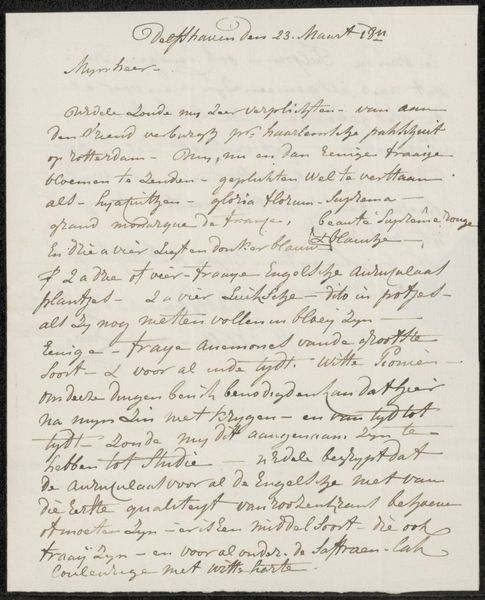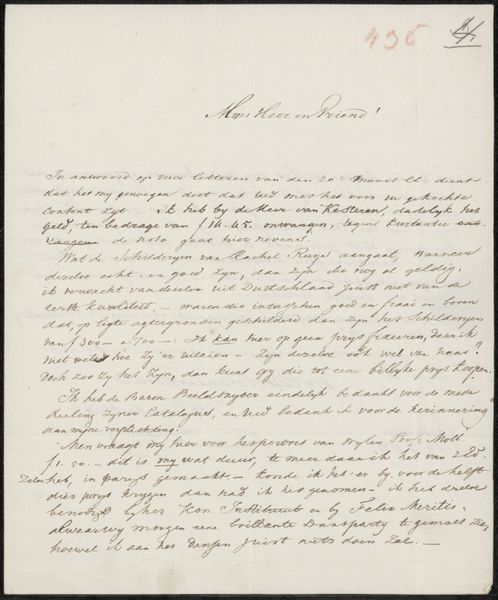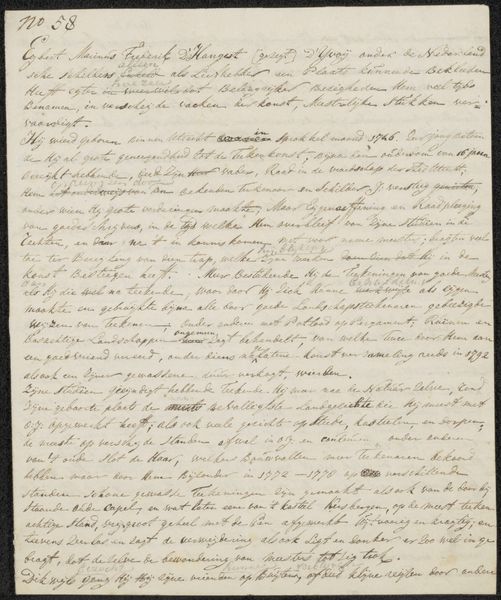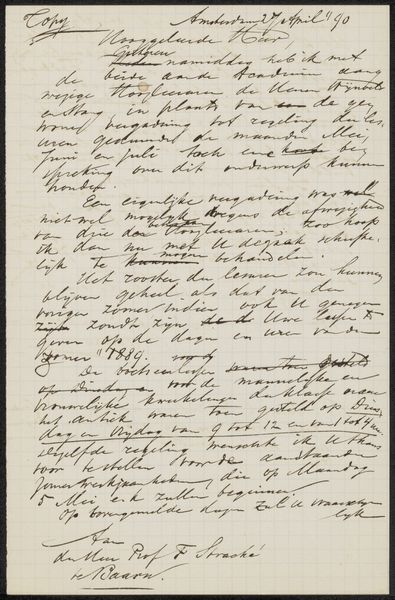
Copyright: Rijks Museum: Open Domain
Curator: This work, "Brief aan August Allebé," possibly from 1911, housed at the Rijksmuseum, is an ink drawing on paper. It's really intriguing as a historical document. Editor: Yes, it does feel like a peek into a different era. It looks like someone’s handwriting in a letter. I'm drawn to its intimate scale. What kind of story do you think this artwork tells? Curator: Well, it's more than just personal correspondence; it reflects artistic values of the period. Letters like this were key parts of an intellectual and artistic network. Notice the calligraphic style – it hints at the social significance placed on cultivated self-expression, particularly during the Romanticism movement. It's also a "portrait," but one formed by textual information not imagery. What do you think of that approach to portraiture? Editor: That’s interesting. I’m used to portraits depicting faces, so this feels very abstract and unusual, a new concept to consider in portraits, but can writing and calligraphy actually represent the spirit of the person being portrayed? Curator: Absolutely! Think of the letter's content as representing the writer's thoughts and beliefs, forming an image of their mind. The reference to Rembrandt in the text also reveals the contemporary Dutch art world, what was inspiring artists. How do museums preserve these kind of artistic records? Editor: Good question, so would letters such as this be displayed or merely kept in museum archives? Curator: Exactly, such decisions often are a social-political endeavor. As a visual culture, museums make selections as to the artistic value, importance, influence, beauty and message, therefore dictating which artistic ideas from society deserve remembrance and focus. Editor: That makes me look at it in a whole new light – not just as a letter, but as a preserved historical object of social and artistic significance. Curator: Exactly, a relic frozen in time, allowing modern minds like us to interpret historical context.
Comments
No comments
Be the first to comment and join the conversation on the ultimate creative platform.
